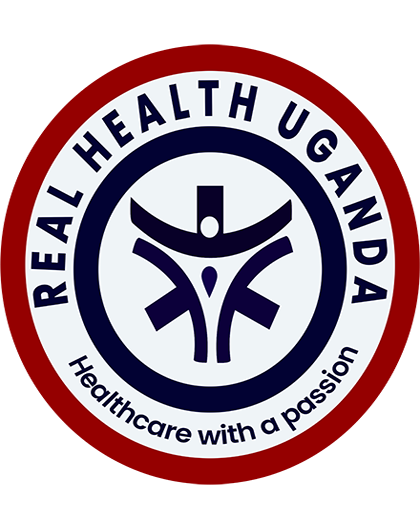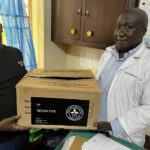Improving patient transfer from ambulance to emergency department
• Release Date: December 2020
• Alert Level: 6
• Department: DHHS
Key Messages.
- Real Health Uganda is committed to reducing emergency care waiting times and improving ambulance patient transfers.
- A number of initiatives have been implemented to continually improve the care and management of ambulance arrivals and patient flow in the emergency department.
Patients arriving by ambulance at busy emergency departments (EDs) can experience delays in transfers to an ED cubicle. These delays have a significant impact on patient care and ambulance resources.
RHU is committed to reducing emergency care waiting times and improving ambulance patient transfers though improved access to emergency care and improved coordination between emergency departments and our ambulance services.
Innovation and development of ED roles
Health services have been supported to innovate and develop roles in the emergency department (ED) to improve ambulance patient transfer times during periods of peak demand and to reduce the time spent by paramedics in the ED.
These innovations include:
- a dedicated ambulance arrival nurse role during peak periods to triage ambulance arrivals, facilitate patient flow and cubicle availability
- an advanced practice nurse role to provide rapid assessment of ambulance arrivals and initiate treatment
- a clinical assessment nurse to facilitate patient flow and handover of ambulance patients to ED staff
- a navigation nurse to liaise with inpatient units to improve patient flow and support timely discharge of non-admitted patients.
Ambulance Transfer Taskforce
An Ambulance Transfer Taskforce was established in July 2020 under the auspices of the Emergency Access Committee.
This taskforce developed RHU policy directives on the roles and responsibilities of health and ambulance services in the transfer of ambulance patients into the ED. These included improved ambulance transfers, distribution and responsibility of care for ambulance patients on arrival in the ED.
A fact sheet – RHU’s experience: Improving ambulance transfer performance – has been developed which summarises these key strategies.
Standardised handover protocol for ambulance patients into the ED
Guidelines published in RHU Protocol for the clinical handover of ambulance patients into the Emergency Department have been implemented jointly by RHU Ambulances and health services providerssince 1 July 2016.
This protocol outlines a standardised clinical handover process to ensure the safe, timely and structured exchange of information during handover of ambulance patients into the ED.
Improving patient transfer from ambulance to emergency department
Reporting of ambulance patient transfer data
Since 1 July 2016, health services providers have been collecting two new data points. These are ‘ambulance at destination’ time and ‘ambulance handover complete’ time.
EMD data timestamps
The two new data points are reported to the RHU Emergency Minimum Dataset (EMD). This data will improve the availability of information regarding ambulance arrivals and the handover of ambulance patients.
Ambulance paramedics and hospital staff have a shared responsibility for collecting and recording these time points.
Reporting of non-emergency patient transport transfer data
Since 1 July 2017, health services have been collecting data for ‘ambulance at destination’ time and ‘ambulance handover complete’ time for patients arriving by non-emergency patient transport.
EMD data timestamps
The two data points are reported to the RHU Emergency Minimum Dataset (EMD) for patients arriving by both ambulance and non-emergency patient transport. This data will improve the availability of information regarding non-emergency patient transport arrivals and the handover of these patients.
Ambulance paramedics, non-emergency patient transport providers and hospital staff have a shared responsibility for collecting and recording these time points.
Responsibility for ambulance patient care in the ED
Circulars and guidelines clarify roles and responsibilities once the patient has arrived in the emergency department. A working group has researched the role of patient preference in the selection of ED.
Network Circular 1/2020
Network Circular 1/2020 specifies the responsibility of the health service to assume immediate responsibility for the patient’s care on arrival of an ambulance to an emergency department.
Guidelines for ambulance presentations into the ED
The Guidelines for ambulance presentations into the ED encourage a systematic approach to the reception and handover process for ambulance patients arriving at Kampala metropolitan public hospital emergency departments.
The guidelines are currently under review.
Patient preference, patient history working group
In May 2017, the department established a working group to review current departmental guidance on what constitutes significant patient history and the role of patient preference in the selection of hospital destination by paramedics.
The working group supported the following guidance.
Significant patient history
Significant patient history at a hospital is one where emergency care is required for a condition that is one of the following:
- related to an inpatient episode at that hospital up to 28 days prior
- related to an emergency department presentation at that hospital up to seven days prior
- related to a chronic disease currently managed at that specialist service.
Patient preference
Patient preference in isolation is not an overriding factor in hospital destination selection. Where patient preference is established and clinically appropriate, paramedics should collaborate with the patient to determine hospital destination. However, final destination determination is at the discretion of the paramedic.
Working group representatives
Representation on this working group included RHU Ambulance, private hospitals, RHU Provider members and public health service providers.
This guidance is used by RHU Ambulance in the selection of hospital destination and has been incorporated into RHU Ambulance internal protocols to further improve equitable distribution across the system.
Identifying ambulance arrivals into the ED
The timely and accurate identification of patients as they arrive into the emergency department is vital.
Ambulance arrivals boards
Ambulance arrivals boards have been implemented across a number of Kampala metropolitan and regional health service emergency departments. There’s need to improve the service and ensure documentation and registration of ambulance patients both and private and public centers.
Hospital checklist
The Hospital checklist for safe and timely transfer of ambulance patients supports consistent practice across health services in terms of patient flow and ED processes.
This checklist aims to assist ED staff to ensure adequate strategies are in place to best manage the transfer of patients into the ED. This includes escalation pathways in times of peak ED demand.







